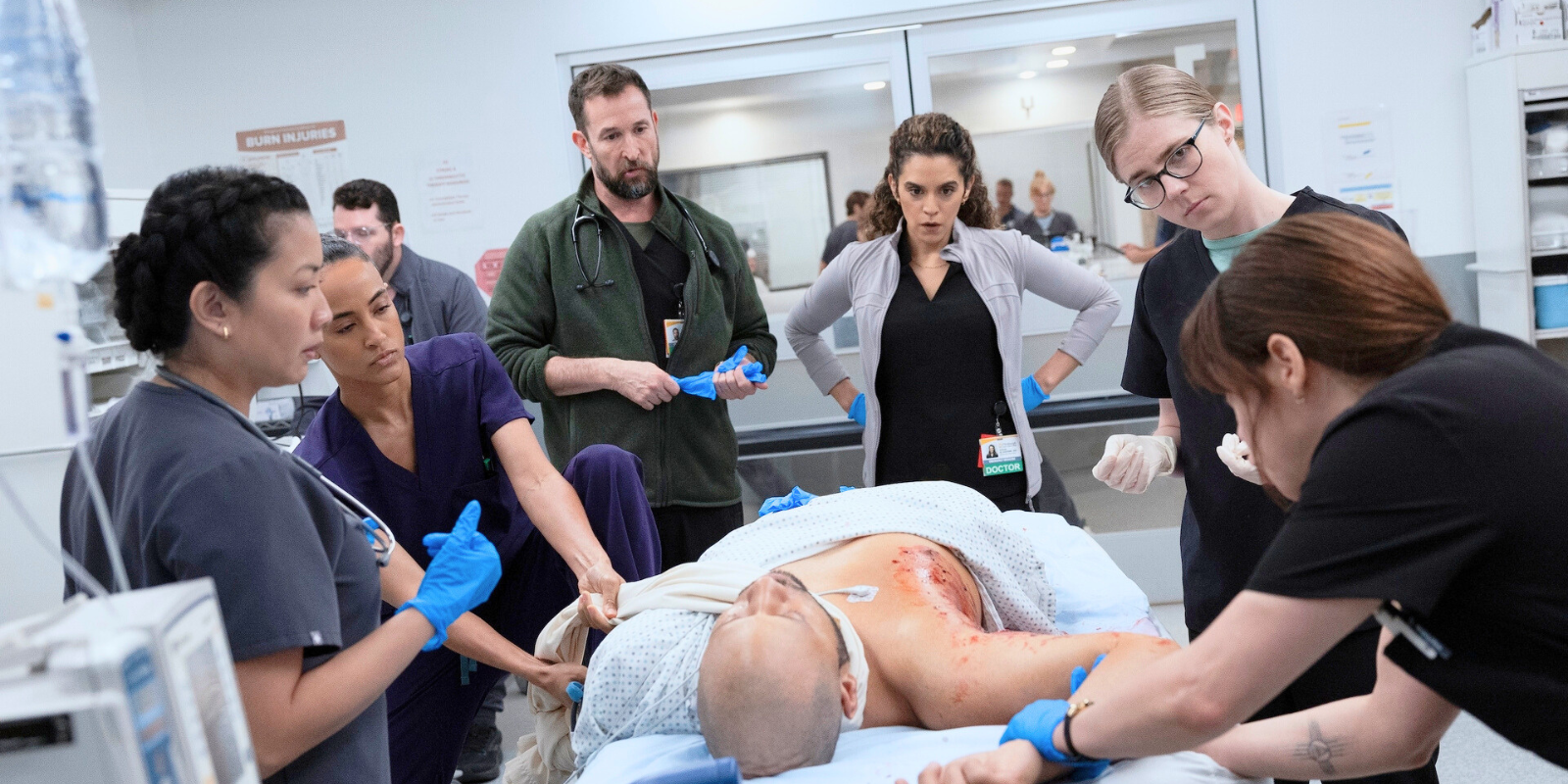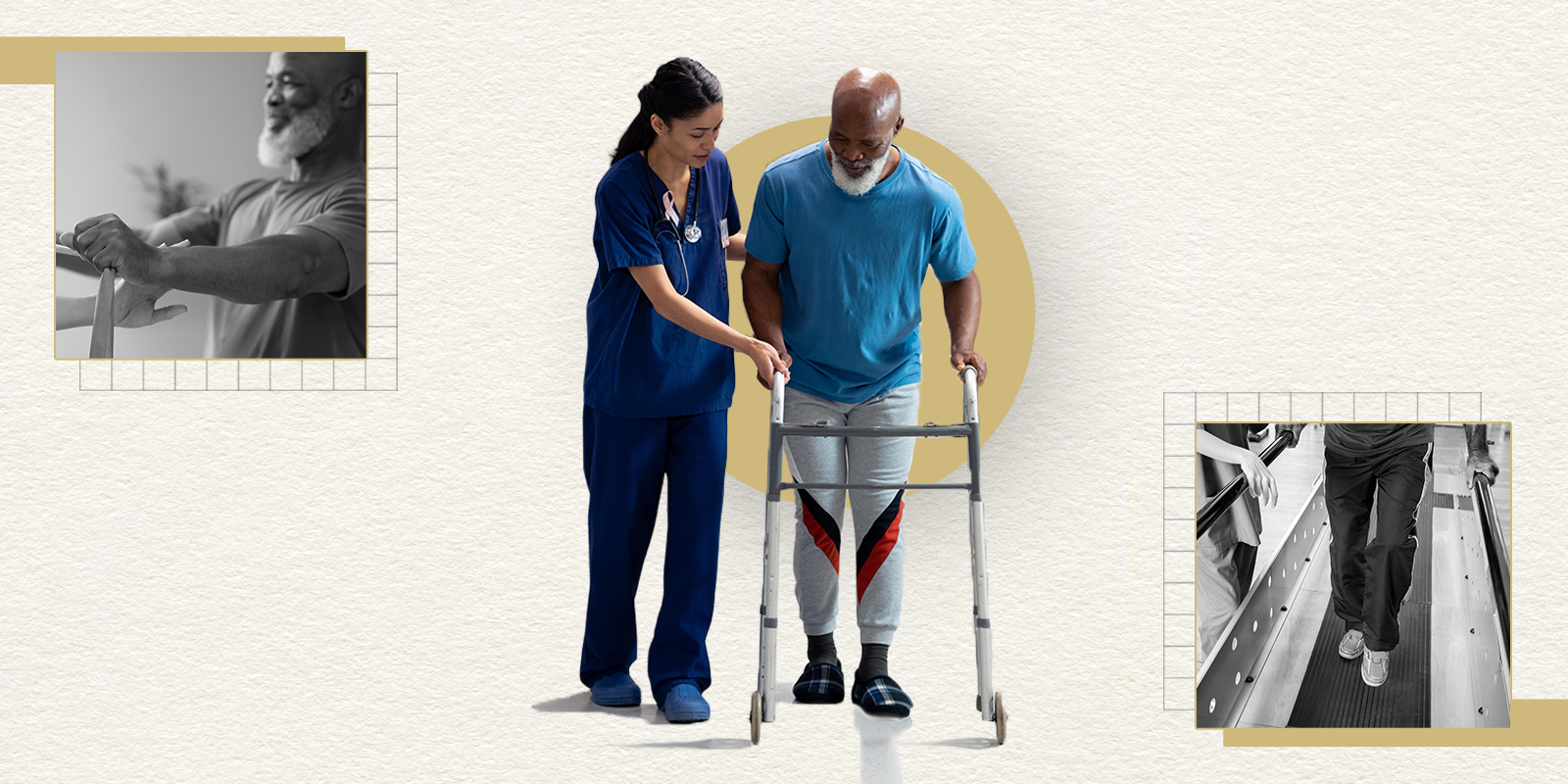On Monday, the Center for Combat Medicine and Battlefield (COMBAT) Research welcomed NASA astronaut Kjell Lindgren, MD, to the University of Colorado Anschutz Medical Campus, where he presented at a distinguished leader seminar on “The Challenges of Medical Care in Space: A Perspective From Low Earth Orbit and the Future of Human Spaceflight."
Lindgren, a 2002 graduate of the CU School of Medicine and emergency medicine physician, was selected by NASA in June 2009 as one of 14 members of the 20th NASA astronaut class and has spent more than 300 days in space across two spaceflights.
Vik Bebarta, MD, professor of emergency medicine and director of COMBAT, introduced Lindgren and highlighted the importance of Lindgren’s experience to COMBAT.
“We wanted to bring our friend Dr. Lindgren back to campus to get his perspective on the bridge between medical care and space exploration as science and research progresses,” said Bebarta. "From the Air Force Academy through medical school, we worked closely together. Now we work together to focus on solving the toughest medical challenges in space, the military, and our local communities.”
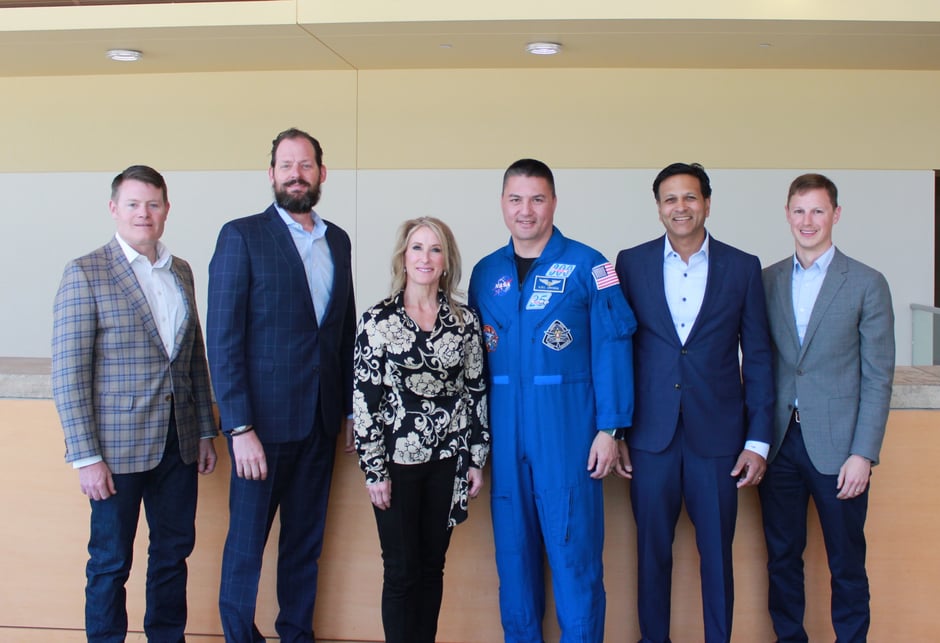
COMBAT and Department of Emergency Medicine Leadership pose with Lindgren.
From left to right: Sean Keenan, MD, Jay Lemery, MD, Kathleen Flarity, DNP, PhD, Kjell Lindgren, MD, Vik Bebarta, MD, Ben Easter, MD.
Medical challenges on the ISS and beyond
Lindgren spoke about specific medical challenges on missions to the International Space Station (ISS) and the moon that have been studied for decades. However, Lindgren explained that as researchers and astronauts set their sights on the human journey to Mars, challenges are greatly exacerbated, and some remain unknown.
The ISS is 254 miles above Earth’s surface, but Mars is more than 145 million miles away. “On the ISS, we are able to plan for common, expected medical challenges like muscle atrophy and minor changes to the body,” said Lindgren.
“The most significant challenges to me, as we aim far beyond where we’ve gone, are exposure to radiation, increased intracranial pressure, which threatens eye health, availability of medical tools, and shelf life of medications. The health and welfare of the crew weighs heavily on me.”
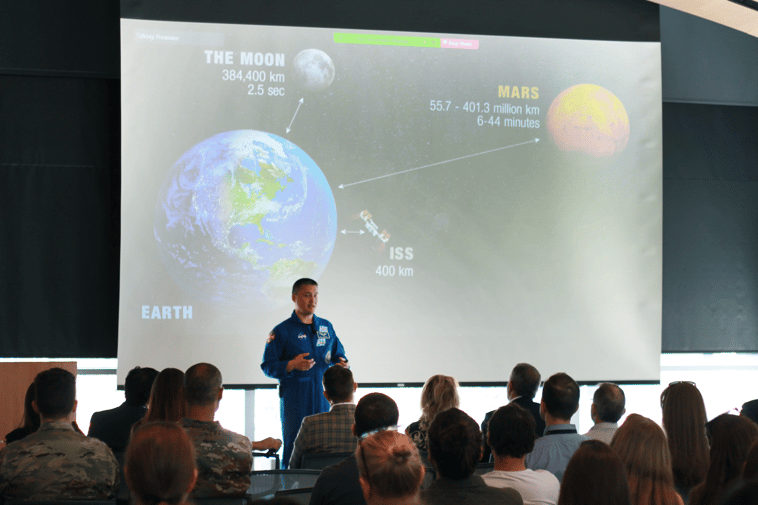
Lindgren explaining the distance between Earth, the moon, the International Space Station, and Mars.
The risk of the unknown also presents new challenges, Lindgren noted, adding that travel to Mars would be 573,000 times further than the distance of one mission to the ISS.
Astronauts are currently exposed to radiation on the ISS, Lindgren said, and with further travel in space, astronauts are at even greater risk. There haven’t been enough studies examining long-term effects, he said. “There is a NASA simulator studying radiation, but translating these effects to the human experience will be challenging."
Lindgren also highlighted eye health in space as a major future research focus area.
“There is intracranial pressure that affects astronauts’ eyes,” he said. “They may experience retinal folds and retinal edema, leading to blurry vision or vision loss. NASA has a robust vision research program, but it’s concerning we don’t have a direct measure of intracranial pressure in space.”
In addition to medical challenges, food supply and access to enough medical equipment remain consistent concerns for Lindgren. “Surgery in space would be an absolute disaster, with fluids, equipment, and consumables floating around,” said Lindgren. “The limited volume of supplies, equipment, and shelf life for food and pharmaceuticals is a challenge for longer missions. Many assumptions about the shelf life of medications may prove false in a space exploration environment. It’s another big area of improvement in research.”
In a critical health emergency, astronauts on the ISS are able to evacuate to Earth in a few days or less. On a mission to Mars, that wouldn’t be possible, given the mission distance.
“The most significant challenges to me, as we aim far beyond where we’ve gone, are exposure to radiation, increased intracranial pressure, which threatens eye health, availability of medical tools, and shelf life of medications. The health and welfare of the crew weighs heavily on me.”
Bridge between two worlds
Despite the challenges to transporting humans safely further into space, Lindgren is passionate and excited about the potential for medical innovations, even some that are taking place at CU Anschutz.
“I see a lot of parallels between what you all are doing here at CU Anschutz within COMBAT and what we do at NASA,” said Lindgren. “In low Earth orbit, we don’t have an ICU to rush a patient to. We have to address any injuries or health concerns as a team, on the spot."
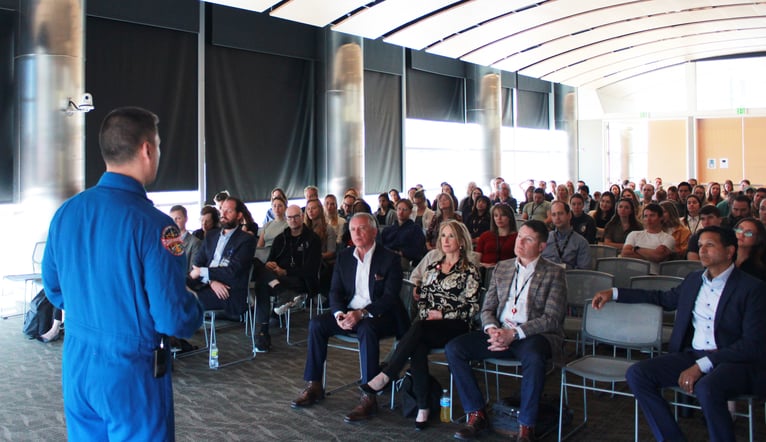
Lindgren presenting to the crowd of students, researchers, and leadership on Monday.
The challenges are similar, he said, to those being worked on by CU School of Medicine faculty members Jay Lemery, MD, who oversees the Climate & Health Program, and Ben Easter, MD, who leads CU’s Medicine in Space and Surface Environments (MiSSE) program, as well as a new MD-MS program preparing medical students for careers in human spaceflight. The program will launch its first cohort in fall 2023.
Easter is also deputy element scientist for NASA’s Exploration Medical Capability (ExMC), working to address many of the challenges that Lindgren described and advancing medical system design for space missions.
“Supporting astronauts in space requires understanding both the spacecraft itself and the humans operating and living inside it,” Easter says. “The MD-MS program brings together the expertise of CU Anschutz on the clinical side with CU Boulder on the engineering side to develop physician-engineers who can think in sophisticated, interdisciplinary ways.”
There is not a physician on every mission to space, Lindgren noted. The bridge between the two worlds will rely heavily on innovative initiatives such as the new MD-MS program and world-class emergency medicine and engineering research.
"We would love to partner with you to define a path to Mars," Lindgren said, addressing the medical students in the audience. "We have great exploration ahead of us."

